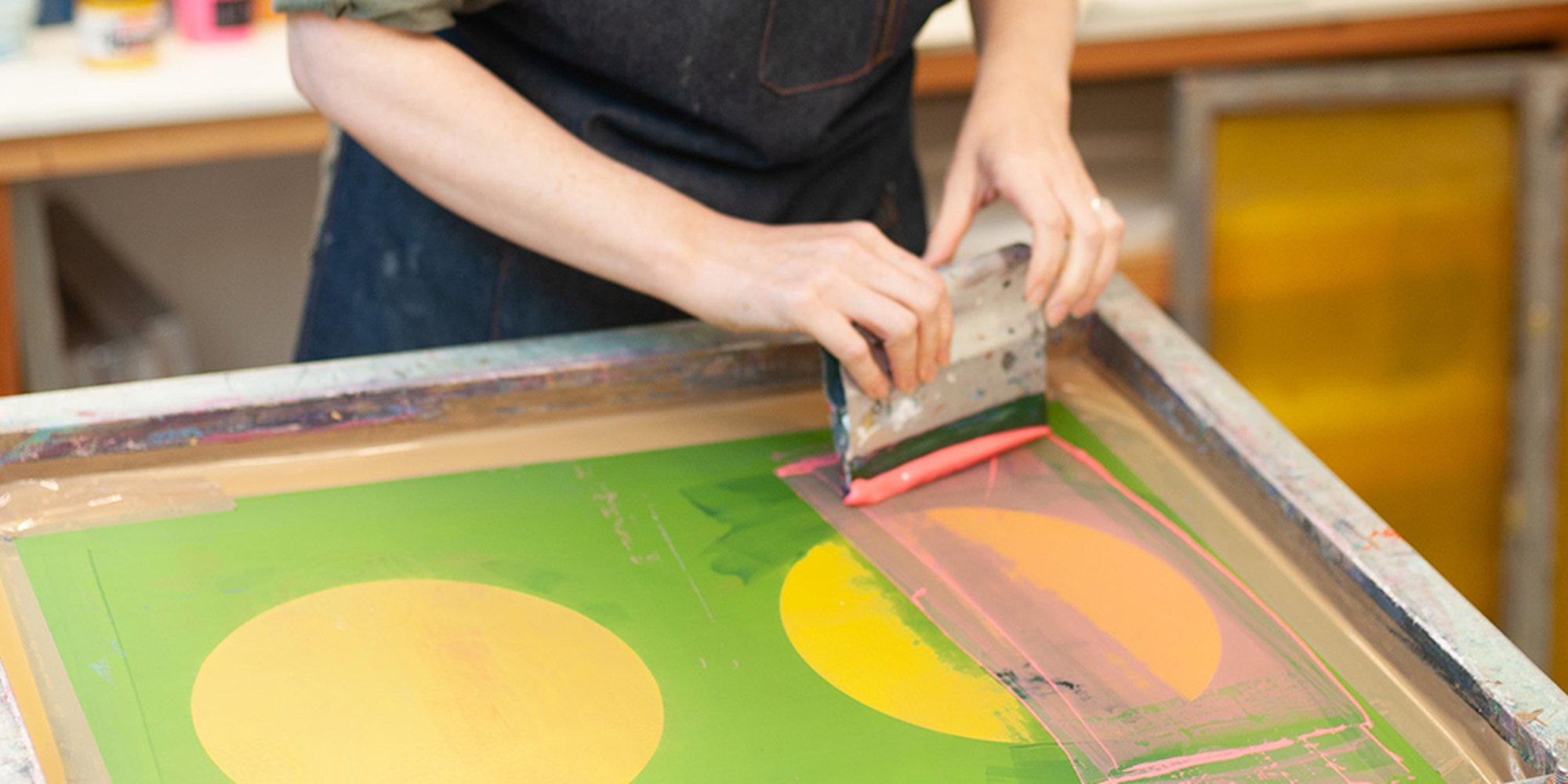The Important Overview to Understanding Screen Printing and Its Versatile Utilizes
Screen printing has a rich history that goes back to old times, evolving right into an innovative technique utilized throughout numerous markets today. This guide discovers the ins and outs of the screen printing process, describing its applications in advertising and marketing, home, and style décor - 10:9 Design Company. Comprehending these principles can open up creative capacity for both commercial and artistic projects. The adhering to sections will disclose vital tips and techniques to boost one's screen printing undertakings
The History of Screen Printing
Screen printing has origins that map back centuries, its evolution mirrors the technical and imaginative improvements of different cultures. Coming from old China, the strategy was initially utilized for decorating textiles and later infect Japan, where it came to be indispensable to Ukiyo-e woodblock printing. The method moved to Europe in the 18th century, where it obtained popularity amongst artisans and business printers. The development of photo emulsion in the 20th century transformed screen printing, permitting even more detailed designs and better efficiency. Artists like Andy Warhol additionally drove its appeal, utilizing the tool to create renowned works that mixed commercialism and art. By the late 20th century, screen printing had established itself as a versatile strategy, utilized in style, marketing, and art. Today, it remains to develop, incorporating electronic innovation and expanding its applications throughout various sectors.
The Screen Printing Process Explained
Screen printing transforms creative visions right into substantial designs with a series of specific actions. At first, an image is produced and after that transferred onto a screen, generally made of great mesh fabric stretched over a framework. A light-sensitive emulsion is used to the screen, which is exposed to light, setting in locations not covered by the photo. After washing out the unhardened emulsion, a stencil is formed.
Next off, the screen is put over the substratum, whether it be fabric, paper, or another product. Ink is then pushed through the open locations of the stencil making use of a squeegee, transferring the design onto the substratum listed below. This process can be repeated for multiple colors, requiring separate screens for each shade. The printed thing is healed utilizing heat to guarantee the ink sticks properly, resulting in a long lasting, vivid layout ready for use.
Kinds Of Screen Printing Techniques

Furthermore, specialty techniques, such as discharge screen printing, get rid of color from the fabric to produce softer prints, while foil screen printing uses metallic aluminum foil to achieve a shiny coating (10:9 Design Screen Printing Texas). Each method uses distinct qualities, accommodating different creative needs and production scales, eventually expanding the opportunities within the screen printing domain
Applications of Screen Printing in Various Industries

Additionally, the signage and advertising fields utilize screen printing for creating distinctive screens and banners. This approach permits vibrant colors and detailed layouts that catch attention. In electronics, screen printing is used for applying conductive inks to circuit card, vital for component links. In addition, the home style market accepts screen printing to generate distinctive layouts on fabrics and wall surface art. Generally, screen printing functions as a crucial tool throughout diverse areas, improving items with personalized and aesthetically enticing graphics.
Tips for Successful Screen Printing Projects
While undertaking a screen printing project, cautious interest to detail can considerably enhance the last result. Picking premium products is important; this includes the screen, inks, and substratums. Using appropriate mesh matters can impact ink deposition and detail resolution. Prep work is similarly important; detailed cleansing of screens and correct direct exposure times assure crisp prints.
Next, accurate registration is vital for multi-color prints. Making use of learn the facts here now placement devices can assist accomplish exact layering. In addition, testing prints on scrap materials before production assists identify possible problems without throwing away resources.

Frequently Asked Inquiries
What Materials Are Best for Screen Printing on Fabric?
Cotton and polyester blends are perfect for screen printing on textile because of their sturdiness and ink absorption. In addition, specialized fabrics like silk or canvas can create one-of-a-kind structures and coatings, boosting the total layout high quality.
How Do I Clean and Maintain Screen Printing Tools?
To preserve and cleanse screen printing equipment, one should consistently wash screens with ideal solvents, examine mops for wear, lube moving parts, and store all products in a dry, dust-free environment to lengthen their life-span.
What Are the Environmental Effects of Screen Printing?
Screen printing can have significant ecological effects, see this website including chemical waste from solvents and inks, water usage throughout cleaning procedures, and power intake. Lasting practices and environment-friendly materials are vital for reducing these adverse effects.
Can Screen Printing Be Done in your home Efficiently?
Screen printing can be effectively done at home with the right materials and strategies. Enthusiasts can produce quality prints, though success depends upon their skill level, tools, and understanding of the procedure included.
What Are the Expenses Related To Starting a Screen Printing Service?

Starting a screen printing service entails costs for devices, products, and workspace. Preliminary expenditures generally range from a few hundred to numerous thousand bucks, depending upon the scale, high quality of machinery, and preferred manufacturing capacity.
Screen printing has an abundant background that dates back to old times, progressing right into an advanced strategy used throughout different markets today. Another strategy, rotating screen printing, utilizes cylindrical displays, helping with continual printing on fabric rolls, thereby boosting efficiency for large-scale manufacturings. Furthermore, specialty methods, such as discharge screen printing, remove color from the textile to produce softer prints, while aluminum foil screen printing applies metallic aluminum foil to achieve a glossy surface. In the fashion market, screen printing is widely made use of to develop vivid layouts on clothing, enabling brands to showcase their one-of-a-kind styles. Cotton and polyester blends are ideal for screen printing on fabric due to their longevity and ink absorption.